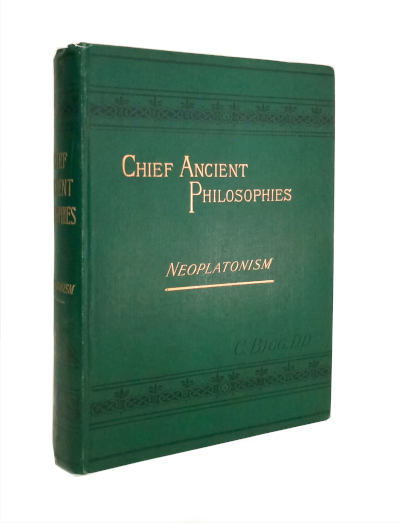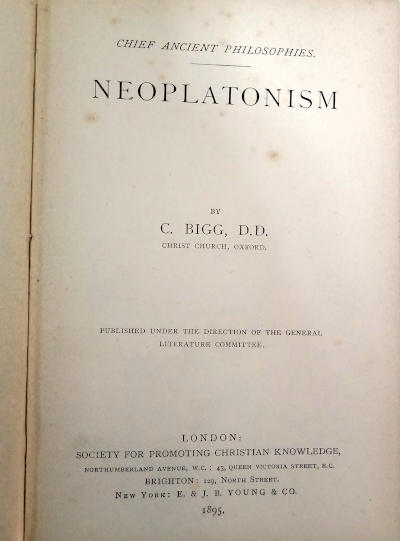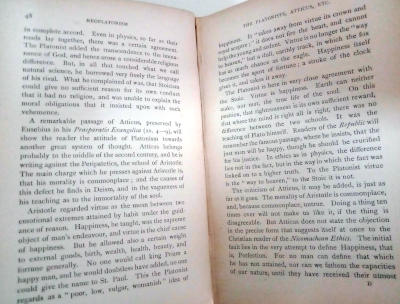The book gives a brief overview of Neoplatonism, beginning with its roots in the ancient Greek philosophies of the Stoics, Pythagoreans Platonists, Plutarch, etc. Also covered are the origins and key figures/schools of Neoplatonism, and an outline of its philosophies and doctrines.
About Neoplatonism (from Wikipedia):
Neoplatonism is a strand of Platonic philosophy that emerged in the 3rd century AD against the background of Hellenistic philosophy and religion.The term does not encapsulate a set of ideas as much as it encapsulates a chain of thinkers which began with Ammonius Saccas and his student Plotinus (c. 204/5 – 271 AD), which stretches to the 6th century AD. Even though neoplatonism primarily circumscribes the thinkers who are now labeled neoplatonists and not their ideas, there are some ideas that are common to neoplatonic systems; for example, the monistic idea that all of reality can be derived from a single principle, “the One”.
After Plotinus there were three distinct periods in the history of neoplatonism: the work of his student Porphyry (3rd to early 4th century); that of Iamblichus (3rd to 4th century); and the period in the 5th and 6th centuries, when the Academies in Alexandria and Athens flourished.
Neoplatonism had an enduring influence on the subsequent history of philosophy. In the Middle Ages, neoplatonic ideas were studied and discussed by Christian, Jewish, and Muslim thinkers. In the Islamic cultural sphere, neoplatonic texts were available in Arabic and Persian translations, and notable philosophers such as al-Farabi, Solomon ibn Gabirol (Avicebron), Avicenna, and Maimonides incorporated neoplatonic elements into their own thinking. Thomas Aquinas had direct access to works by Proclus, Simplicius and Pseudo-Dionysius the Areopagite, and he knew about other neoplatonists, such as Plotinus and Porphyry, through secondhand sources.[6] The mystic Meister Eckhart (c. 1260 – c. 1328) was also influenced by neoplatonism, propagating a contemplative way of life which points to the Godhead beyond the nameable God.
Neoplatonism also had a strong influence on the perennial philosophy of the Italian Renaissance thinkers Marsilio Ficino and Pico della Mirandola, and continues through nineteenth-century Universalism and modern-day spirituality and nondualism. Neoplatonism underpins the mystical traditions in all three of the major Abrahamic religions.




